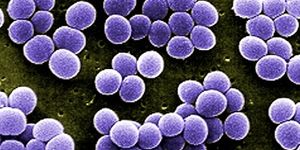Quantum Mechanical Behavior Found in Light-harvesting Molecules of Live Bacteria
An international research team led by theoretical physicist Thomas la Cour Jansen has made a discovery about quantum physics, but in a biological system: quantum mechanical behavior, in the form of superimposed photonic energy, was observed in the light-harvesting molecules in photosynthesis bacteria.
In the realm of atoms and subatomic particles, where the laws of classical physics seem irrelevant, quantum mechanics rules supreme. The basic building blocks of the world often behave in such a counterintuitive way that it seems to be against our perception of reality, and these behaviors can only be explained with quantum physics principles.
Take the principle of superposition for example, which is often associated with the most popular feline in the world of science-the Schrödinger's Cat. In Schrödinger's famous thought experiment, a cat is locked in a box with a vial of a toxic substance which can only be released via the radiation emitted from a decaying radioisotope. According to quantum mechanics, without anyone looking into the box, the cat inside could be in both "dead" and "alive" at the same time.
Scientists have long known that this weird quantum phenomenon can happen to objects at the atomic and subatomic level. In fact, the superposition principle has been observed in experiments with non-living systems, such as superconducting magnets, photonic system, and ion traps. But in living systems, the evidence was scarce and the results of the handful experiments that were conducted in the last decades are still debatable.
Photosynthesis means to build with light. Most green plants and light-harvesting bacteria relies on this fundament biochemical process to generate energy-rich compound such as glucose. Inside chloroplast, the energy gathering and transforming factories, the flow of lectrons is initiated by photonic energy absorbed from sunlight. Light causes the electrons in chlorophyll as well as other type of light-trapping pigments to jump up level(s) and out of their orbit. When the electrons fall back into their original orbit, resonance energy is released and used to produce ATP and NADPH, which eventually lead to the production of sugar.
The researchers used different polarizations of light to perform measurements in live green sulfur bacteria. The bacteria used in the experiment have a photosynthetic complex known as Fenna-Matthews-Olson (FMO) complex. FMO is formed by three monomers, each of which contains seven light-sensitive molecules known as bacteriochlorophyll alphas, which are responsible for light harvesting the process of photosynthesis. In the study, the researchers observed coupled excited states of the bacteriochlorophyll molecules, meaning that a photon excited two of those molecules because the energy is superimposed on both.
This groundbreaking discovery was published in the journal Nature Chemistry this week.
How Quantum Biology Might Explain Life’s Biggest Questions by Jim Al-Khalili (TED)
Source: Science Daily









